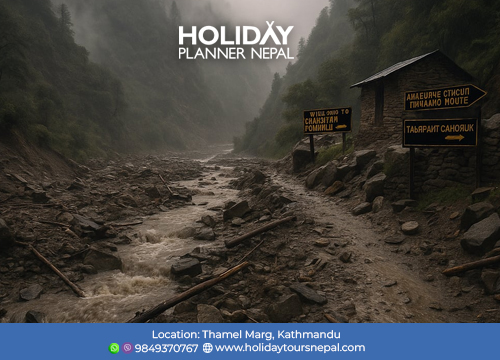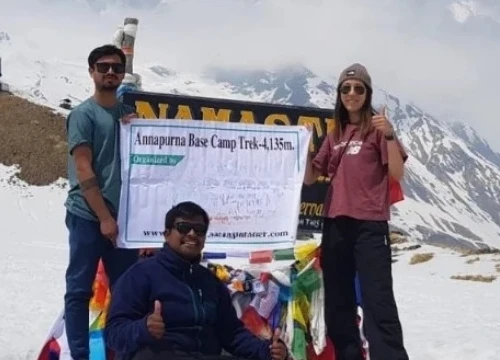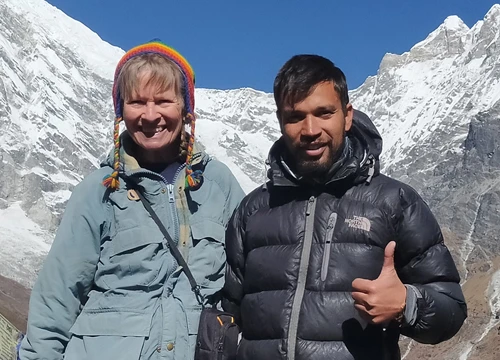Nestled in the heart of the Himalayas, Nepal trekking routes are among the most sought-after adventures in the world. Every year, thousands of trekkers embark on these mountain trails, seeking both natural beauty and cultural immersion. Yet, the 2025 cyclone and a series of recent tragedies have left an undeniable mark on these iconic routes.
As we explore the current state of trekking in Nepal, it’s important to reflect on how these events have reshaped the experience for adventurers and the communities that depend on tourism. From the mighty Everest Base Camp to the timeless Annapurna Circuit and the serene Langtang Valley, each trail tells a story of resilience, hope, and transformation.
This blog takes you through the evolving narrative of Nepal trekking routes, uncovering the challenges, recovery efforts, and the enduring spirit that continues to attract adventurers from across the globe.
Overview of Iconic Nepal Trekking Routes
Nepal offers a rich tapestry of trails, each revealing a different side of the Himalayas and Nepalese life. Among the most renowned Himalayan trekking trails is the Everest Base Camp Trek, which leads through the Khumbu Valley — home to the Sherpa people and breathtaking views of the world’s tallest peak. It’s not just a journey to a destination, but a cultural and emotional pilgrimage for many.
Another legendary Nepal trekking route is the Annapurna Circuit Trek, a loop around the Annapurna Massif that showcases incredible diversity — from lush forests and rice fields to the high-altitude Thorong La Pass. This route remains a favorite for trekkers seeking both challenge and reward.
The Langtang Valley Trek, though lesser known, provides a more intimate experience of rural Nepal. Winding through rhododendron forests and Tamang villages, it captures the true essence of Nepalese hospitality and untouched natural beauty.
Each of these Himalayan trekking trails embodies the spirit of adventure, connecting trekkers with both nature and the resilient mountain communities.
The 2025 Cyclone: Challenges and Impact on Nepal Trekking Routes
The 2025 cyclone was a turning point for Nepal’s trekking industry. Originating from the Bay of Bengal, it brought torrential rain, fierce winds, and widespread destruction. Landslides and floods ravaged several Nepal trekking routes, damaging bridges, trails, and mountain lodges that serve as lifelines for trekkers.
The Everest Base Camp Trail saw sections washed away and infrastructure severely affected, while the Annapurna Circuit suffered landslides that blocked key paths and altered landscapes. The Langtang Valley, still recovering from the 2015 earthquake, once again faced devastation as trails and villages were buried under debris.
This disaster underscored how climate change is reshaping the Himalayas. The fragile mountain ecosystems and the communities relying on Nepal adventure tours faced immense challenges — both environmental and economic.
Recent Tragedies and Their Impact on Trekking Tourism
In addition to the cyclone, recent tragic incidents such as avalanches and sudden weather shifts have added to Nepal’s trekking woes. The most notable was an avalanche along the Annapurna Circuit, claiming the lives of trekkers and guides. Such tragedies, though rare, have deeply affected the trekking community.
Tourist numbers temporarily declined as safety concerns grew, affecting local businesses from teahouses to porters and guides. These events revealed the need for improved emergency systems and awareness among trekkers.
Despite these setbacks, the spirit of the Nepal trekking route endures. Local communities, dependent on tourism for survival, have shown incredible strength, leading Nepal trekking recovery efforts with determination and unity.
Improved Safety Measures for Trekkers
In response to recent disasters, new safety initiatives have been introduced to protect trekkers and ensure a more secure trekking experience.
The Nepal government and trekking associations have launched stricter guide certification programs, mandatory trekker insurance, and better trail communication systems. New weather monitoring stations now provide real-time updates, and rescue operations have been strengthened with trained personnel and equipment.
Trekkers must now register before entering certain regions — a measure that ensures better tracking and quicker responses in case of emergencies. These proactive steps mark a major milestone in Nepal trekking recovery efforts, making future treks safer and more sustainable.
Environmental Balance: Protecting the Himalayas
The rising number of trekkers has brought environmental concerns to the forefront. The fragile mountain ecosystems struggle with waste, deforestation, and habitat disruption. The 2025 cyclone amplified these issues, prompting renewed focus on eco-friendly trekking.
Sustainable tourism initiatives now encourage trekkers to adopt Leave No Trace principles — using reusable bottles, avoiding plastics, and respecting wildlife. Local communities are establishing recycling programs and eco-lodges, while authorities work to limit crowding on popular Himalayan trekking trails.
Balancing tourism and conservation is key to ensuring that each Nepal trekking route continues to thrive without harming its natural surroundings.
Voices from the Trails: Stories of Strength and Hope
Behind every trail lies a human story. Many trekkers who returned to Nepal after the cyclone describe not just damaged paths, but stronger connections with the people.
Take Sarah, a traveler from Australia, who trekked to Everest Base Camp post-cyclone. She recalls the generosity of Sherpa families who rebuilt teahouses with their own hands, welcoming guests despite limited resources.
Or Raj, a Langtang guide who lost his home twice — once to the earthquake and again to the cyclone. Yet, he continues to lead treks, saying, “The mountains teach us to rise again.”
These personal stories reflect the deep emotional bond that unites trekkers and locals, fueling Nepal trekking recovery efforts with courage and compassion.
Preparing for Your Nepal Trekking Route: Essential Tips
If you’re planning to explore a Nepal trekking route, preparation is everything. Begin training months in advance with cardio and endurance workouts to handle steep climbs and altitude.
When packing, prioritize quality gear — durable trekking boots, layered clothing, waterproof jackets, and reliable backpacks. Essentials include trekking poles, headlamps, water filters, and first-aid kits.
Don’t rush your itinerary; allow time for acclimatization to avoid altitude sickness. Register your trek, stay updated on weather forecasts, and always trek with a licensed guide.
By being prepared, you ensure both safety and a more rewarding Nepal adventure tour.
The Future of Nepal Trekking: Resilience and Renewal
Despite recent hardships, the future of Nepal trekking routes shines bright. Reconstruction projects are underway, restoring bridges, rebuilding trails, and improving eco-friendly infrastructure.
The government and international organizations are collaborating to promote sustainable trekking, support local businesses, and diversify trekking destinations. Routes like Manaslu and Upper Mustang are gaining attention, reducing pressure on crowded trails like Everest and Annapurna.
Through Nepal trekking recovery efforts, the country is redefining adventure travel — focusing not just on exploration, but on preservation and community empowerment.
Conclusion: Rediscovering the Spirit of the Himalayas
The 2025 cyclone and recent tragedies have tested Nepal’s strength, but the essence of adventure in the Himalayas remains unbroken. Every Nepal trekking route continues to tell a story of endurance, beauty, and unity.
For trekkers, these trails are more than just paths — they are journeys of connection, challenge, and self-discovery. As we walk these sacred routes, we also play a role in supporting Nepal adventure tours and the local families who keep this spirit alive.
By treading responsibly and respecting nature, we help ensure that the Himalayan trekking trails of Nepal remain a symbol of resilience for generations to come.
👉 Plan your next trekking adventure with Holiday Tours Nepal and be part of Nepal’s journey of recovery, renewal, and adventure.








